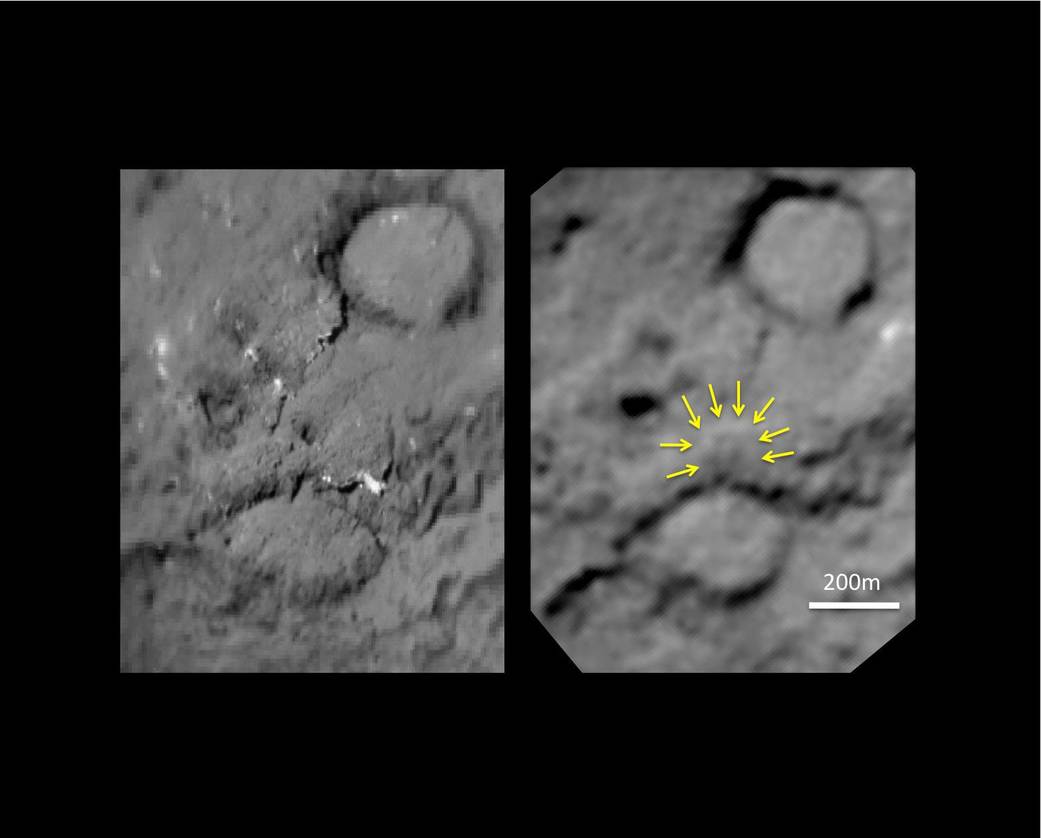
This pair of images shows the before-and-after comparison of the part of comet Tempel 1 that was hit by the impactor from NASA’s Deep Impact spacecraft.
The left-hand image is a composite made from images obtained by Deep Impact in July 2005. The right-hand image shows arrows identifying the rim of the crater caused by the impactor. The crater is estimated to be 150 meters (500 feet) in diameter. This image also shows a brighter mound in the center of the crater likely created when material from the impact fell back into the crater. An unannotated version of this image can be seen here.
Stardust-NExT is a low-cost mission that will expand the investigation of comet Tempel 1 initiated by NASA’s Deep Impact spacecraft. NASA’s Jet Propulsion Laboratory, a division of the California Institute of Technology in Pasadena, manages Stardust-NExT for the NASA Science Mission Directorate, Washington, D.C. Joe Veverka of Cornell University, Ithaca, N.Y., is the mission’s principal investigator. Lockheed Martin Space Systems, Denver, built the spacecraft and manages day-to-day mission operations.
For more information about Stardust-NExT, please visit http://stardustnext.jpl.nasa.gov.
Image credit: NASA/JPL-Caltech/University of Maryland/Cornell


























